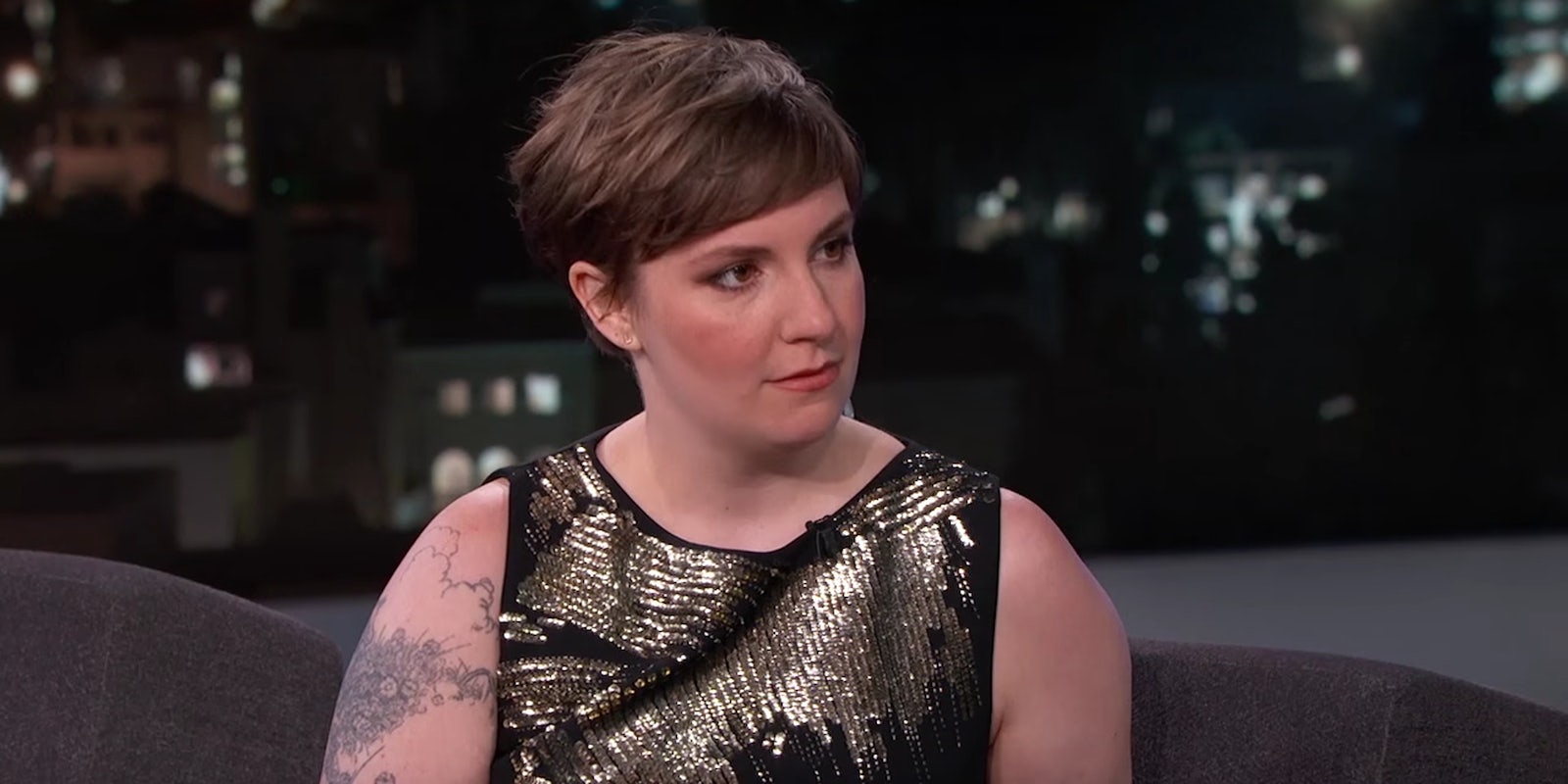Lena Dunham, creator and star of HBO’s Girls, announced today that she’s taking some much needed rest while she battles endometriosis.
In simple terms, endometriosis is when the lining of the uterus—called the endometrium—grows outside the uterus. According to the Mayo Clinic, the errant endometrial tissue can grow along the uterus, fallopian tubes, and ovaries. It affects anywhere between 6 to 10 percent of women, according to the National Institute of Health.
Women might not realize they have the disease right away. They may experience very painful cramping and unusually heavy bleeding during their periods, but may not think it out of the ordinary. However, the pain often increases over time, and can be accompanied with other symptoms like pain during and after sex, diarrhea, and painful urination. The pain isn’t necessarily isolated to a particular phase of the menstrual cycle, though. And the Mayo Clinic adds that some women with very severe endometriosis may never experience pain at all.
But endometriosis is a serious disease that can also cause infertility. Researchers aren’t quite sure what causes it, either. According to the Mayo Clinic, there are a number of possibilities. One of the major ones is “retrograde menstruation” where endometrial tissue growing normally in the uterus grows into the fallopian tubes and leaks out into the area outside the reproductive system. Other hypotheses include that the disease is autoimmune—the result of the immune system turning against the body—or that it results from scars from abdominal surgeries.
Women who have mothers, sisters, or female cousins with the disease are more likely to develop it themselves. Never giving birth, a history of pelvic infections, or an abnormal uterus are all risk factors as well.
Endometriosis is also associated with atherosclerosis (the buildup of plaques in blood vessels) and mood disorders like depression and bipolar disorder. Researchers aren’t sure if there’s a cause-and-effect relationship between endometriosis and atherosclerosis or mood disorders.
Women with mild endometriosis can sometimes manage the pain just by taking a painkiller. But for many women, endometriosis is best managed with hormone therapy. This usually takes the form of birth control, whether it’s the pill, an IUD, an injection, or some other form of hormonal contraceptive. Birth control uses hormones to help prevent ovulation, but this has the effect of slowing endometrial tissue growth as well, according to the NIH.
In more extreme cases, women may need surgery to remove some of the tissue growth or even to sever nerves in the pelvis to lessen the pain.
Though not usually life-threatening, sometimes endometriosis can lead to intestinal blockages that can be deadly if not treated. However, for most women, the disease can affect their quality of life (possibly explaining the association with mood disorders). But with access to proper treatment like hormonal birth control, many women lead comfortable lives.
Update 12:35 CT, Feb. 9: This piece has been updated to say that researchers aren’t sure if there is a relationship between endometriosis and atherosclerosis.
Screengrab via Jimmy Kimmel Live/YouTube


